How To Take Care Of A Belly Button Piercing? Aftercare Tips
Take care of your body jewelry so you can flaunt a navel that dazzles!
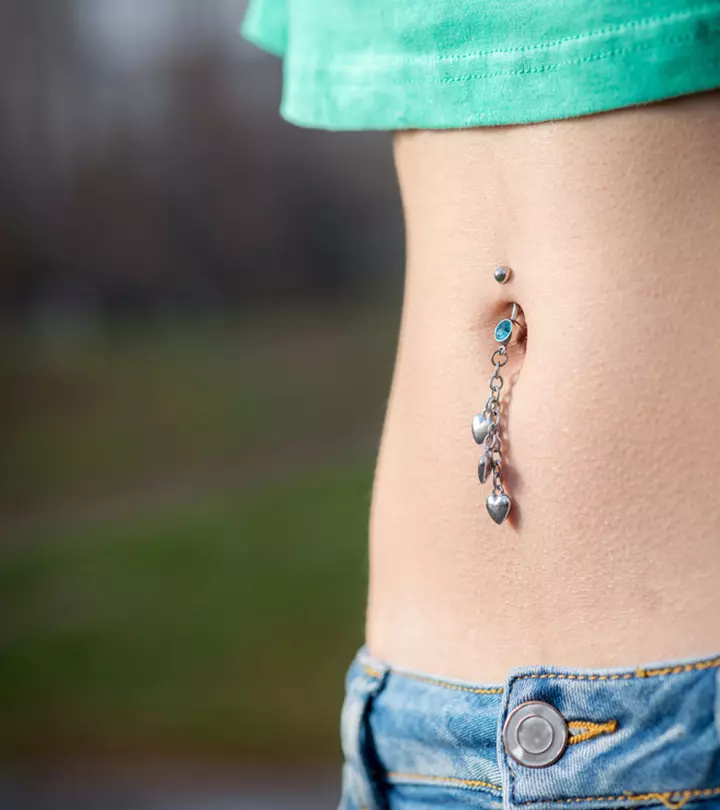
Image: Shutterstock
Let’s face it – there are few piercings that can make heads turn the way a belly button piercing does. But to rock this body jewelry in style, you need to take good care of it. Thus, following some simple aftercare tips for a belly button piercing is of utmost importance. Navel piercings typically take around 6 to 9 months to heal properly. During this healing time, it is very important to follow the right aftercare guidelines to lower the risk of infection. This article contains detailed information on what tips to follow, medications to take, and when to see a doctor. Scroll down to know more!
In This Article
Aftercare Tips For A Belly Button Piercing
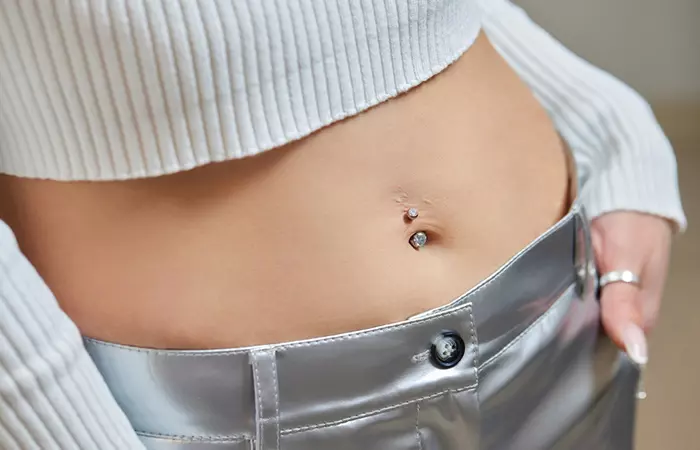
Caring for your belly button piercing is crucial to ensuring proper healing and preventing infections (1). Here are some dos and don’ts for belly button piercing aftercare:
Dos
- Clean With Saline Solution: Use a sterile saline solution to clean your piercing twice a day. Soak a cotton swab in the solution and gently clean around the piercing, wiping any crust or debris.
- Wash Your Hands: Before touching your piercing, make sure you wash your hands with antibacterial soap to prevent introducing bacteria.
- Rotate The Jewelry: Gently rotate the jewelry during cleaning to prevent it from sticking to the surrounding tissue. However, do not force it if it does not move easily.
- Wear Loose Clothing: Choose clean, loose-fitting clothing to avoid irritation and allow proper airflow around the piercing.
- Use A Mild Soap: When showering, use a mild, fragrance-free soap to clean the piercing. Rinse thoroughly to remove any soap residue.
- Pat Dry: After cleaning, pat the area dry with a clean paper towel or allow it to air dry. Avoid using cloth towels, as they may harbor bacteria or leave fabric residue.
- Maintain Good Hygiene: Keep the area clean and dry. Avoid swimming in pools, hot tubs, or bodies of water that may contain pathogens (2).
- Monitor For Signs Of Infection: Pay attention to any signs of infection, such as increased redness, swelling, pain, or discharge. If you notice any of these symptoms, consult with a professional piercer or a healthcare provider (3).
Don’ts
- Touch: Refrain from touching your piercing unnecessarily, and never let others touch it with dirty hands.
- Use Harsh Chemicals: Harsh chemicals like rubbing alcohol or hydrogen peroxide may be too drying and can delay the healing process.
- Avoid Beauty Ointments Or Creams: Stay away from ointments and creams as they can trap bacteria and hinder the healing process.
- Excessively Move The Jewelry: While it is good to rotate the jewelry during cleaning, avoid excessive twisting or turning, as it can cause irritation.
- Change The Jewelry Too Soon: Wait until the piercing is fully healed before changing the jewelry. Changing it too soon can lead to complications and delay the healing process.
- Avoid Sleeping On Your Stomach: Try to avoid sleeping on your stomach to prevent accidentally hurting or putting unnecessary pressure on the piercing.
Following these dos and don’ts should help promote a healthy healing process for your belly button piercing. If you have any concerns or experience unusual symptoms, consult with a professional piercer or a healthcare provider for guidance.
If you are experiencing an infected piercing, read on for some quick remedies to tackle the situation.
How To Take Care Of An Infected Belly Button Piercing
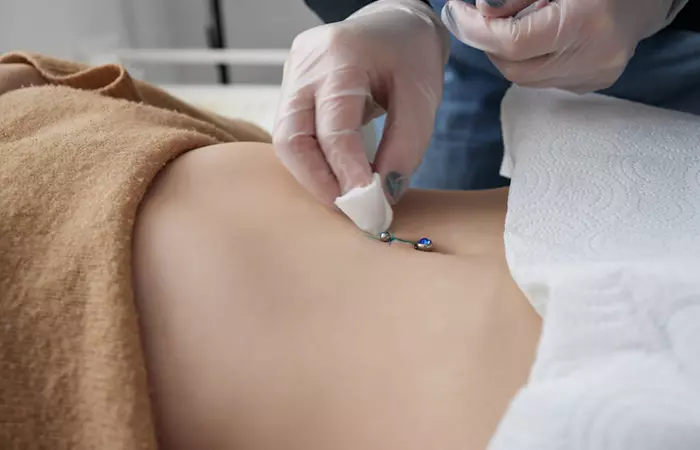
Below are some additional remedies and tips for taking proper care of an infected belly button piercing:
- Tea Tree Oil Swab: Tea tree oil has natural antibacterial properties, which may aid in healing your infected belly piercing (4). Mix a drop or two with a carrier oil (like coconut or jojoba oil) and apply it to the infected area using a cotton ball or gauze. Be cautious with the concentration, as undiluted tea tree oil can be harsh on the skin.
- Chamomile Compress: Chamomile has anti-inflammatory properties (5). Brew some strong chamomile tea, let it cool, and then soak a clean cloth in it. Apply the compress to the infected piercing for 10-15 minutes.
- Turmeric Paste: Turmeric has antibacterial and anti-inflammatory properties (6). Mix a small amount of turmeric powder with water to form a paste. Apply the paste to the piercing and let it sit for 15 minutes before rinsing with warm water.
- Aloe Vera Gel: Aloe vera has soothing and healing properties (7 ). Apply a small amount of pure aloe vera gel to the infected area after cleaning it to promote healing and reduce inflammation.
- Probiotics: Consider incorporating probiotics into your diet or taking supplements. Probiotics can support your immune system and promote the skin’s ability to ward off infections and support skin healing processes (8 ).
- Avoid Irritants: Keep away perfumes, lotions, and other potential irritants from around the piercing hole. Stick to mild, hypoallergenic products.
- Antibacterial Creams: In consultation with a healthcare professional, you might consider using over-the-counter antibacterial creams or ointments to prevent infection. Ensure that the product is safe for body piercings and follow the instructions provided.
Always remember that these remedies are supplementary, and if the infection persists or worsens, seeking advice from a healthcare professional or a reputable piercer is crucial. They can provide personalized guidance based on the severity of the infection.
While you are aware of the steps for proper aftercare, there are a few tips you can keep in mind to enhance your belly piercing healing process. Check them out below!
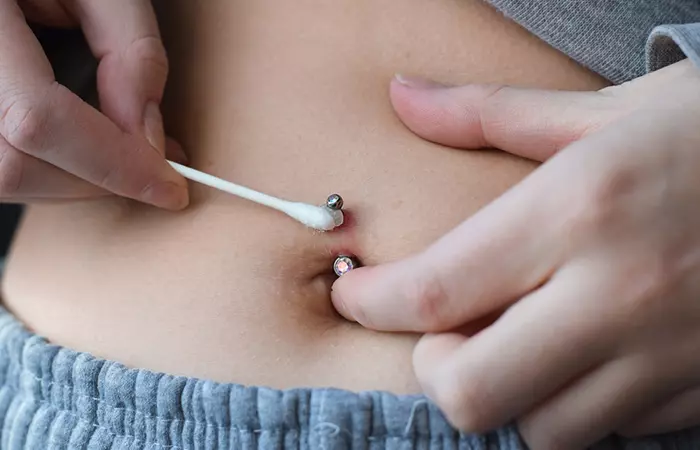
- Avoid Over-Cleaning: While keeping the piercing clean is important, over-cleaning can be counterproductive. Stick to cleaning it twice a day to avoid irritation.
- Use A Mild Soap: When cleaning the piercing, use a mild, fragrance-free soap. Ensure that you rinse thoroughly to remove any soap residue.
- Apply A Warm Compress: Using a warm compress can help improve blood circulation and reduce inflammation (9). Hold a clean, warm cloth against the infected piercing for 5-10 minutes a few times a day.
- Stay Hydrated: Drinking plenty of water can support overall health improvement and keep the skin hydrated from within, thereby contributing to the healing process.
- Consider A Saline Spray: In addition to saline soaks, you can use a salt solution spray designed for piercings. It provides a convenient way to keep the area clean and can be less messy than soaking.
- Boost Your Immune System: A healthy immune system aids in the healing process. Consume a balanced diet rich in vitamins and minerals, and consider taking supplements if needed (10).
- Manage Stress Levels: Stress can impact your body’s ability to heal (11). Practice stress-reducing activities such as deep breathing, meditation, or yoga and get adequate sleep.
- Use Proper Jewelry: Make sure the jewelry is of high quality and non-irritating material like gold, titanium or surgical steel, and suitable for your piercing size (12). Avoid tight or overly decorative jewelry that can trap bacteria.
Jasmine, a lifestyle and fashion blogger, shared her personal experience with getting a navel piercing and taking care of it. Regarding healing and aftercare, she writes, “It takes about 6 months to heal before you can change it. I was given an antiseptic solution which I used every morning and night for about 2 months to keep it from getting infected. I will warn you during its recovery it gets a bit gooey but you can just clean it up with a cotton bud. You know it’s pretty much healed when the gooing stops (i).”
During the initial period after getting a belly button piercing, encountering a mix of blood and pain is quite common. There is no need to panic—instead, focus on effective pain management using OTC medications and home remedies. You can opt for any of the options listed below.
How To Ease Belly Button Piercing Pain
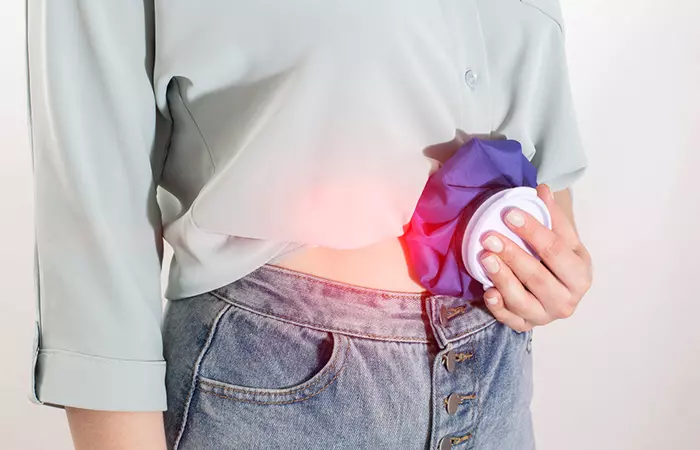
Non-steroidal anti-inflammatory drugs (NSAIDs) may be used to alleviate pain and reduce inflammation associated with navel piercing (13).
- Ibuprofen: Opt for ibuprofen to alleviate discomfort, as it not only helps with pain but also reduces inflammation (13).
- Ice Pack: If the area is swollen, you can use a cold compress or ice pack wrapped in a clean cloth to bring it down. Apply it for 10-15 minutes to help reduce swelling and cool and numb the area.
- Tylenol And Aspirin: These medications are also effective for managing pain resulting from skin wounds (14). However, avoid taking it too early in the healing stage as it can also exacerbate bleeding (15).
How To Avoid Allergic Reactions In A Belly Button Piercing
To avoid allergic reactions, identify allergens, patch-test new products, choose hypoallergenic options, and read labels to ensure the safety of the products that you are using. Opt for nickel-free jewelry, wear protective clothing to avoid irritation or skin allergies, and keep living spaces clean to maintain hygiene. You should also minimize exposure to irritants, be mindful of food allergies, and consult a healthcare professional for allergy testing and find out what you are allergic to. Additionally, carry prescribed medications for severe reactions and stay informed about potential allergens in the environments you interact with.
However, if an allergic reaction or infection does occur and cannot be contained by medications and home remedies, it is advised to see a doctor. Read the next section to know which cases warrant consulting a health professional.
When To See A Doctor
While most belly button piercings heal without issues, there are situations where professional medical advice is required promptly:
- Persistent Infections: If the infection does not improve with a few days of at-home care, or keeps recurring.
- Severe Pain: If you experience severe or prolonged pain that does not subside with over-the-counter medications.
- Unusual Changes: If you notice unusual changes in the appearance of the piercing, such as excessive redness or odorous discharge.
As you can see, proper aftercare is essential for a long-lasting belly button piercing. Following the recommended tips, looking out for signs of infection, and using additional remedies when needed can contribute to optimal healing. It is also crucial to prioritize hygiene, choose appropriate jewelry, and seek professional advice if complications arise. With attentive care and patience, you can enjoy customizing your well-healed belly button piercing.
Frequently Asked Questions
Can I put a bandage over my navel piercing?
It is generally not recommended to cover the piercing with a bandage, as it needs air to facilitate healing. In case you are going swimming or working out, you may cover the healing piercing with a vented wrap to protect it from soaking in water or sweat. Nevertheless, you should consult your piercer for suitable guidance.
How long should I cover my belly button piercing?
Covering the piercing is generally unnecessary after the initial healing period, which can be anywhere between 6 to 9 months. Consult your piercer and follow the specific aftercare instructions provided by them.
What clothes to avoid with belly button piercing?
Avoid tight or restrictive clothing, and be cautious with materials that may catch on the jewelry, such as lace or certain linty fabrics.
Can I wear tight clothes with a belly piercing?
It is advisable to wait until the piercing is fully healed before wearing tight clothing to prevent irritation and discomfort.
How long after a belly button piercing can I exercise?
Wait until the piercing is fully healed before engaging in rigorous exercise. Low-impact activities may be acceptable sooner, depending on individual healing progress. Consult your piercer before resuming any strenuous activities that engage your core.
Key Takeaways
- Careful cleaning and adherence to aftercare guidelines are vital for a healthy belly button piercing.
- Act promptly with remedies like tea tree oil and hot compress if infection occurs, but consult professionals for persistent issues.
- Follow aftercare practices like using a mild soap and proper jewelry selection to enhance the healing process.
- Use medications for pain relief and maintain hygiene to prevent allergic reactions.
Along with aesthetic appeal and infection, belly button piercing holds other pros and cons as well. You need to take care of these factors in order to let your piercing heal properly. Watch the following video for aftercare and styling tips.
Personal Experience: Source
StyleCraze's articles are interwoven with authentic personal narratives that provide depth and resonance to our content. Below are the sources of the personal accounts referenced in this article.
(i) REVIEW ON A BELLY BUTTON PIERCING!
https://justjasmineella.wordpress.com/2018/04/17/review%E2%80%8B-on-a-belly-button-piercing/
References
Articles on StyleCraze are backed by verified information from peer-reviewed and academic research papers, reputed organizations, research institutions, and medical associations to ensure accuracy and relevance. Read our editorial policy to learn more.
- Suggested Aftercare for Body Piercings
https://safepiercing.org/aftercare/ - Infections Acquired via Fresh Water: From Lakes to Hot Tubs
https://journals.asm.org/doi/10.1128/microbiolspec.iol5-0019-2015 - Body Piercing
https://www.ncbi.nlm.nih.gov/pmc/articles/PMC1496593/ - The Effect of Tea Tree Oil (Melaleuca alternifolia) on Wound Healing Using a Dressing Model
https://pubmed.ncbi.nlm.nih.gov/23848210/ - Polyherbal Combination for Wound Healing: Matricaria chamomilla L. and Punica granatum L.
https://www.ncbi.nlm.nih.gov/pmc/articles/PMC8149548/ - Wound-Healing Effects of Curcumin and Its Nanoformulations: A Comprehensive Review
https://www.ncbi.nlm.nih.gov/pmc/articles/PMC9698633/ - The Effect of Aloe Vera Clinical Trials on Prevention and Healing of Skin Wound: A Systematic Review
https://www.ncbi.nlm.nih.gov/pmc/articles/PMC6330525/ - The Role of Probiotics in Skin Health and Related Gut–Skin Axis: A Review
https://www.ncbi.nlm.nih.gov/pmc/articles/PMC10385652/ - The Effect of Warm Moist Compresses in Peripheral Intravenous Catheter-Related Phlebitis
https://www.sciencedirect.com/science/article/abs/pii/S1462388923001722 - The Role of Nutrition in Wound Healing: An Overview
https://www.britishjournalofnursing.com/content/nutrition/the-role-of-nutrition-in-wound-healing-an-overview/ - The Impact of Psychological Stress on Wound Healing: Methods and Mechanisms
https://www.ncbi.nlm.nih.gov/pmc/articles/PMC3052954/ - Jewelry For Initial Piercings
https://safepiercing.org/jewelry-for-initial-piercings/ - Factors That Impair Wound Healing
https://www.ncbi.nlm.nih.gov/pmc/articles/PMC4495737/ - Effect of Non-Steroidal Anti-Inflammatory Drugs on Post-Surgical Complications against the Backdrop of the Opioid Crisis
https://www.ncbi.nlm.nih.gov/pmc/articles/PMC6136175/ - Antithrombotic Properties of Aspirin and Resistance to Aspirin: Beyond Strictly Antiplatelet Actions
https://www.ncbi.nlm.nih.gov/pmc/articles/PMC1852201/
Read full bio of Madhumati Chowdhury
Read full bio of Gracia Odile






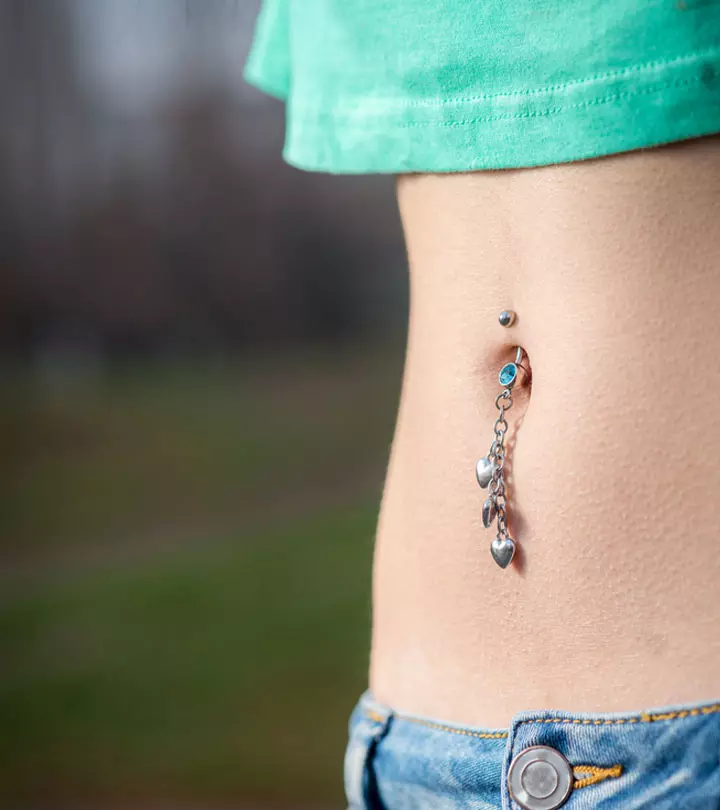

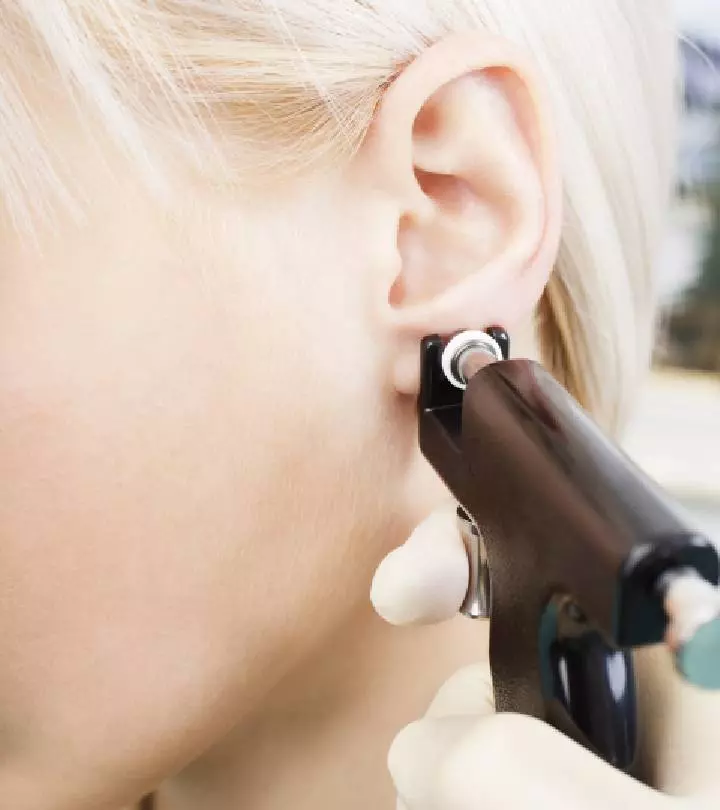
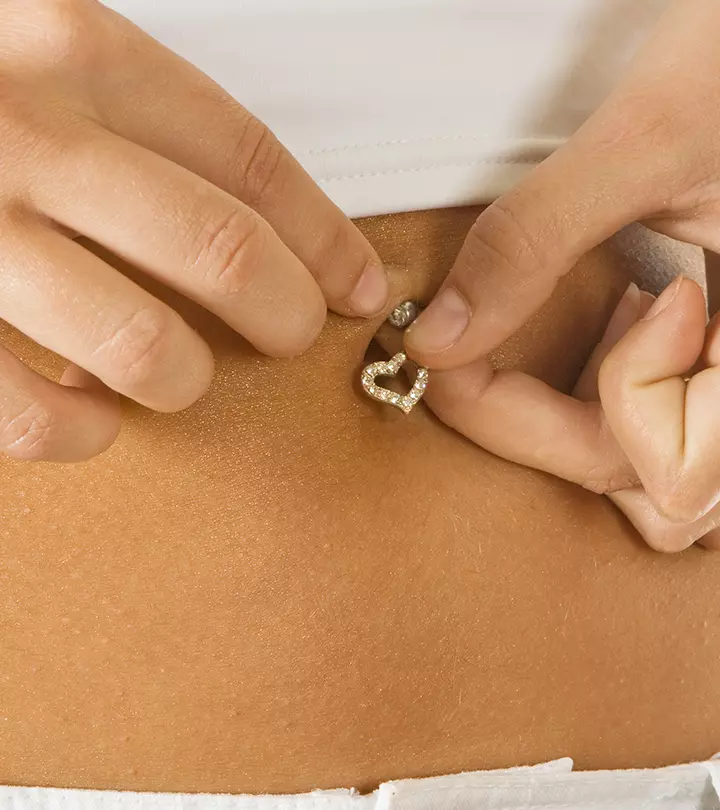
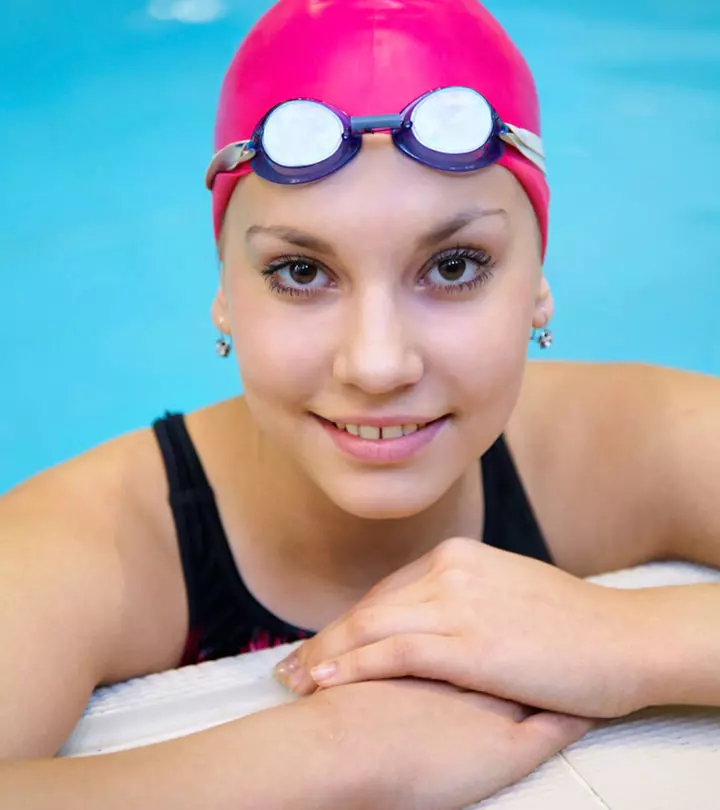
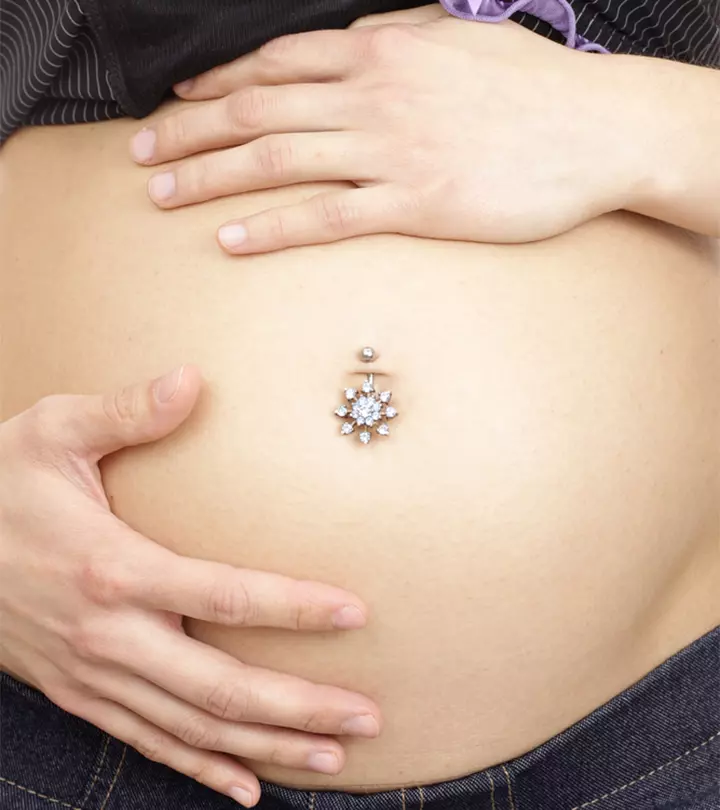
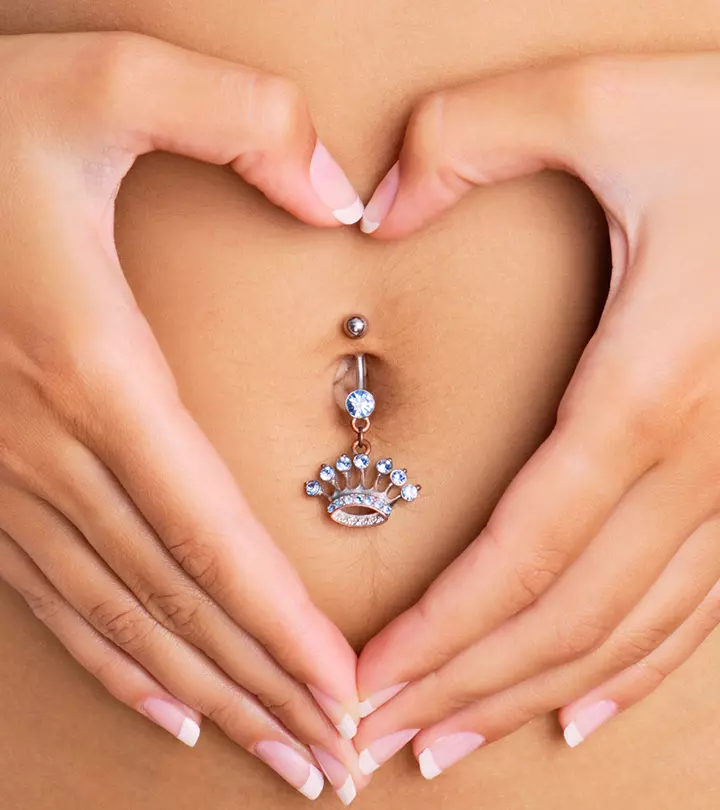





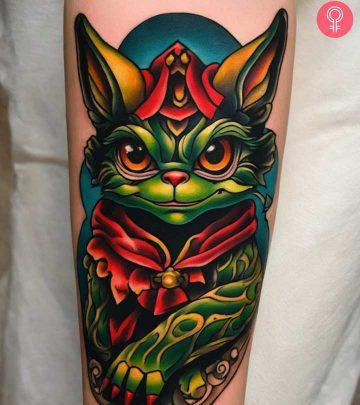



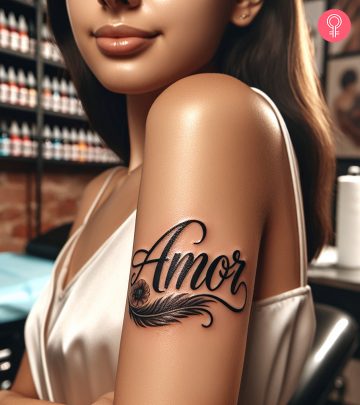
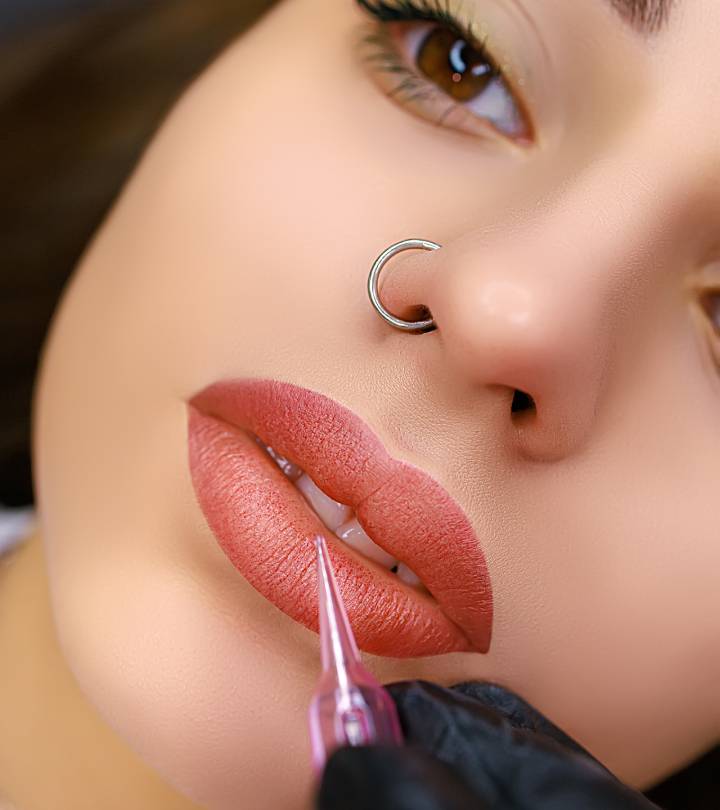

Community Experiences
Join the conversation and become a part of our empowering community! Share your stories, experiences, and insights to connect with other beauty, lifestyle, and health enthusiasts.